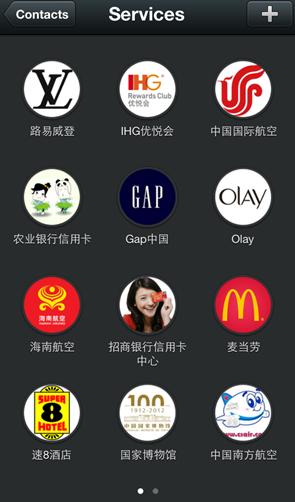In less than 2 years, WeChat has evolved from a relatively simple chat app to a multilevel platform that holds a lot of promise for marketers on a global scale. In addition, by releasing its APIs to third party developers, WeChat has spawned the entire ecosystem of integrated apps ranging from those providing information on products or delivering customer support to complex flight booking systems and banking apps which all can be run within WeChat.
Although, not every brand has to be on WeChat, this platform is certainly one to be considered by companies seeking to engage with Chinese consumers directly. It has its strength as well as its weaknesses which I’m going to discuss next.
First of all, a company considering marketing on WeChat should have a clear idea about its limitations as a marketing tool. Those can be summarized as follows:
- While Weibo is more about discovery of new companies, brands or services to follow, WeChat is not geared for that at all. As of this moment, searching capabilities for companies or brands are very limited, unless you happen to know exactly the name it is registered with which could be something like xmsj816 (popular Xiaomi cell phone maker).
The only sure way to connect is via scanning QR code, which would take you straight to the company’s account with an option to follow it. This basically means that you have to induce and encourage your potential followers to scan your QR code with their phones by placing it everywhere you possibly can: from posters and brochures to delivery vans and even receipts. - Currently there are two types of accounts associated with businesses: subscription and service accounts. Both come with limitation on the number of messages that can be sent to users. Service account allows custom menu with advanced functionality and can serve as a mobile web version of company’s official site. Through additional customization it can provide more advanced functionality by connecting to the back end database of the main service behind the app. On the other hand service account only allows one message per month to users, limiting potential of engaging with users on a frequent basis.
Subscription account allows maximum two messages per day but doesn’t have the advanced functionality or customization. Also, subscription accounts are grouped together and the user has to go inside the subfolder to see new messages. - Measuring the engagement with WeChat is still fairly rudimentary, although this seems to be changing. By the end of 2013, Tencent announced the release of new APIs that are available to verified accounts for annual subscription fee of RMB 300. They allow more advanced tracking of followers, however those capabilities are still very basic. As more marketers embrace WeChat, it’s reasonable to assume that Tencent could be working on embedding more metrics into the back end of the platform;
What type of account should you choose in order to take full advantage of WeChat capabilities? Here are a few tips:
Functionality vs. engagement
Since service accounts are mainly about functionality they are, in effect, serve as a mini-app within WeChat. If you can think of some type of functional service that you can offer, than the service account is for you. For example, you could direct your users to the nearest store or outlet based on their current location or you could integrate membership or points based system with such account. Some customer service functions can also be built-in within the customized menu.
Ecommerce integration
If your company is considering integrating ecommerce or payment system within WeChat, than, again, service account should be your choice. Currently, the system allows linking only Chinese issued credit and bank cards but this may change in the future as well since WeChat is aggressively expanding globally.
Direct messaging and broadcasting
On the other hand, service accounts allow only one message to users per month. So, if your business is more concerned with keeping your customers informed on new promotions, sending out coupons or announcing events, subscription account could be a better choice.
Ease of setup
Subscription accounts are much easier to setup and run and they don’t require advanced customization as service accounts do. The level of engagement is higher but it is true only if you provide an interesting and engaging content. Don’t forget that deleting an annoying or useless account only takes a swipe of a user’s finger.
Switching
Another aspect to keep in mind is that switching between service and subscription accounts will not be possible once one is chosen. Of course, one potential strategy could be to have both – service account for functionality and subscription one for broadcasting messages frequently enough to keep your followers interested and informed.



